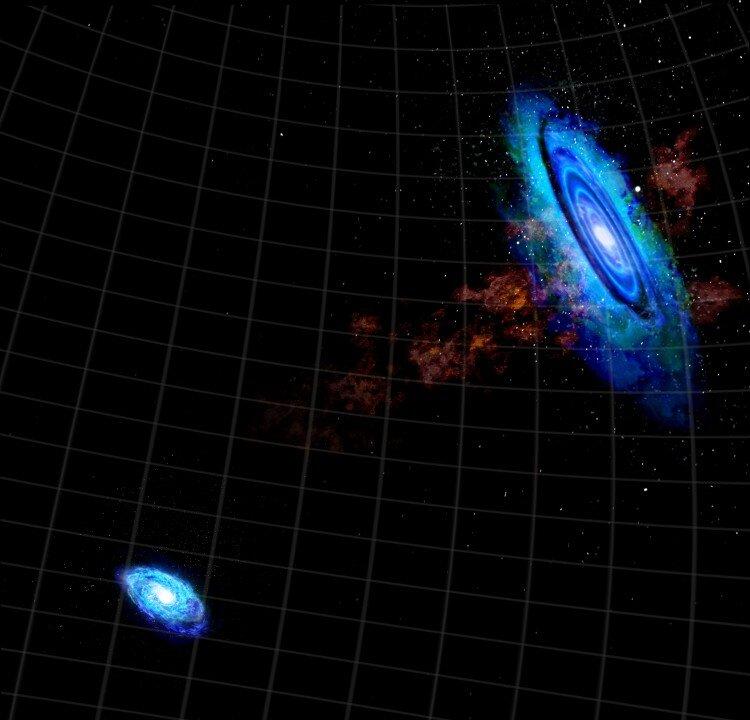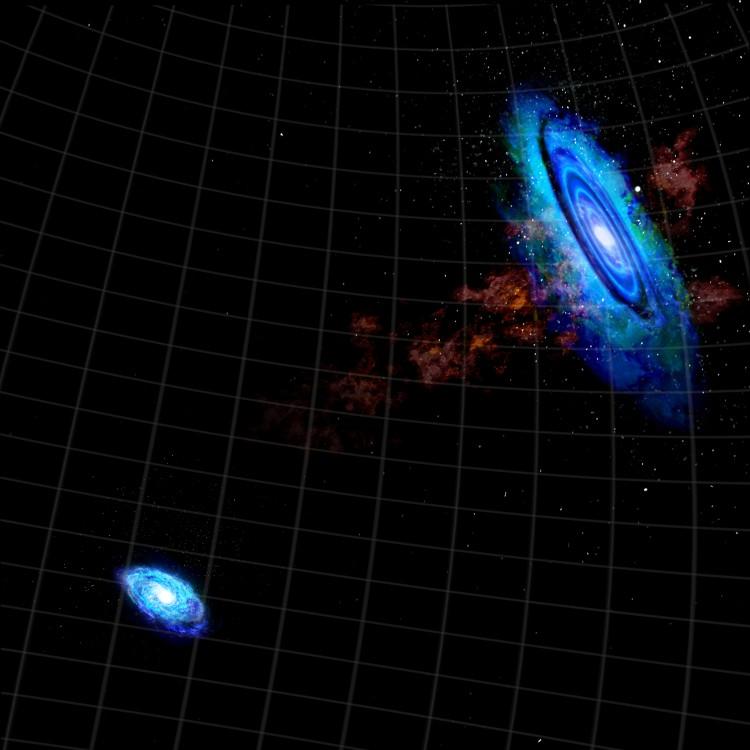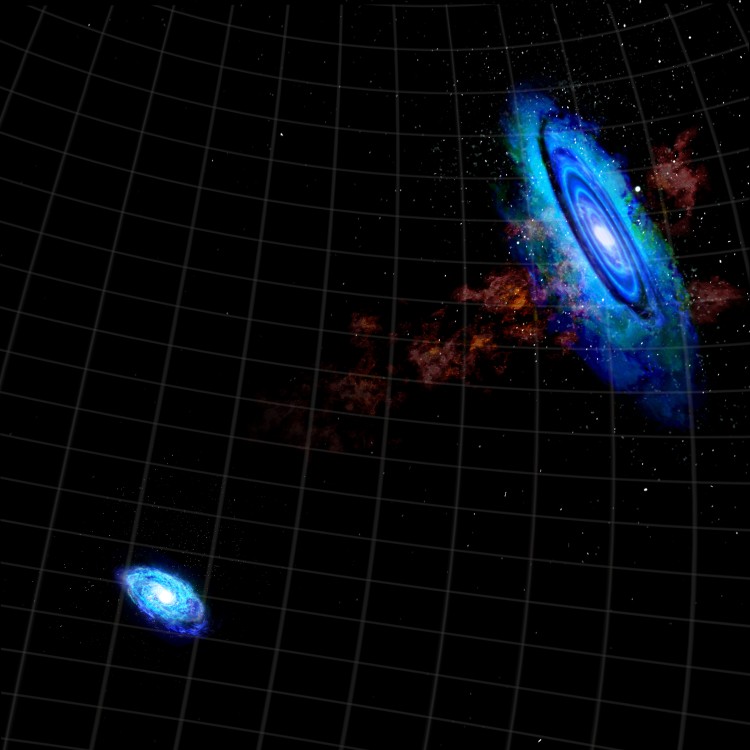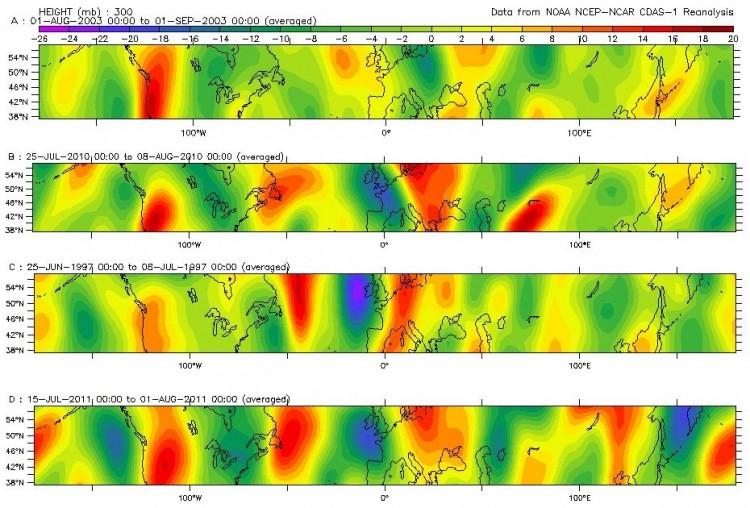A filament of hydrogen gas connecting the Triangulum Galaxy, M33, with the giant Andromeda Galaxy, M31, indicates a close encounter probably occurred billions of years ago between our two galactic neighbors.
Using the National Science Foundation’s Green Bank Telescope (GBT), U.S. astronomers have established the existence of a hydrogen “bridge” that was first spotted in 2004 with six dense clumps of gas revealed.
“The properties of this gas indicate that these two galaxies may have passed close together in the distant past,” said Jay Lockman at the National Radio Astronomy Observatory (NRAO) in a press release.
“Studying what may be a gaseous link between the two can give us a new key to understanding the evolution of both galaxies.”
The two galaxies belong to the Local Group, which comprises about 30 galaxies including the Milky Way. They are about 2.6 and 3 million light-years away from Earth respectively.
Extended regions of stars and interstellar gas can form between galaxies when they interact due to galactic tide forces.
“We think it’s very likely that the hydrogen gas we see between M31 and M33 is the remnant of a tidal tail that originated during a close encounter, probably billions of years ago,” said Spencer Wolfe of West Virginia University in the release.
“The encounter had to be long ago, because neither galaxy shows evidence of disruption today.”
As the gas appears to be moving at around the same velocity as the two galaxies when viewed from Earth, this strongly suggests that it is a link between them.
“The gas we studied is very tenuous and its radio emission is extremely faint—so faint that it is beyond the reach of most radio telescopes,” Lockman said.
“We plan to use the advanced capabilities of the GBT to continue this work and learn more about both the gas and, hopefully, the orbital histories of the two galaxies.”
The findings were presented at the American Astronomical Society’s meeting in Alaska today.





